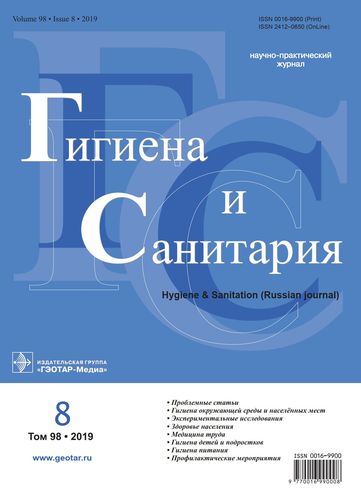Problems and prospects of training specialists in preventive toxicology
- Authors: Onishchenko G.G.1, Nikolayeva N.I.1, Khamidulina K.K.2, Filin A.S.1, Korolev A.A.1, Nikitenko E.I.1
-
Affiliations:
- I.M.Sechenov First Moscow State Medical University
- Russian Medical Academy of Continuous Professional Education
- Issue: Vol 98, No 8 (2019)
- Pages: 799-803
- Section: PROBLEM-SOLVING ARTICLES
- Published: 15.08.2019
- URL: https://ruspoj.com/0016-9900/article/view/639653
- DOI: https://doi.org/10.47470/0016-9900-2019-98-8-799-803
- ID: 639653
Cite item
Full Text
Abstract
About the authors
G. G. Onishchenko
I.M.Sechenov First Moscow State Medical University
Author for correspondence.
Email: noemail@neicon.ru
Russian Federation
Natalia I. Nikolayeva
I.M.Sechenov First Moscow State Medical University
Email: nativ.nikolayeva@gmail.com
ORCID iD: 0000-0003-1226-9990
MD, Ph.D., DSci., Professor of the I.M.Sechenov First Moscow State Medical University, Moscow, 119991, Russian Federation.
e-mail: nativ.nikolayeva@gmail.com
Russian FederationKh. Kh. Khamidulina
Russian Medical Academy of Continuous Professional Education
Email: noemail@neicon.ru
Russian Federation
A. S. Filin
I.M.Sechenov First Moscow State Medical University
Email: noemail@neicon.ru
ORCID iD: 0000-0002-9724-8410
Russian Federation
A. A. Korolev
I.M.Sechenov First Moscow State Medical University
Email: noemail@neicon.ru
ORCID iD: 0000-0002-2294-7444
Russian Federation
E. I. Nikitenko
I.M.Sechenov First Moscow State Medical University
Email: noemail@neicon.ru
ORCID iD: 0000-0002-2302-3008
Russian Federation
References
- Methods for the determination of toxicity and hazard of chemicals (toxicometry) [Metody opredeleniya toksichnosti i opasnosti khimicheskikh veshchestv (toksikometriya)]. Ed. Sanotsky I.V. M.: Meditsina; 1970. 344 p. (in Russian).
- Sanotsky I.V., Ulanova I.P. Hazard criteria in hygiene and toxicology in assessing the risk of chemical compounds [Kriterii vrednosti v gigiene i toksikologii pri otsenke opasnosti khimicheskikh soedineniy]. M.: Meditsina; 1975. 328 p. (in Russian)
- Sanotskiĭ I.V., Ulanova I.P., Khalepo A.I. Prospects of the development of preventive toxicology in the 21st century. Med Tr Prom Ekol. 1998; 6: 21–6. (in Russian)
- Krasovsky G.N., Rakhmanin Yu.A., Egorova N.A. Extrapolation of toxicological data from animals to humans [Ekstrapolyatsiya toksikologicheskikh dannykh s zhivotnykh na cheloveka]. M.: Meditsina; 2009. 208 p. (in Russian)
- Khamidulina Kh.Kh., Rabikova D.N. The advantages and problems of implementation of the globally harmonized system (GHS) of classification and labelling of chemicals in the practice of the national preventive toxicology and hygiene. Gigiena i sanitariya [Hygiene and Sanitation, Russian journal]; 2013 Sep-Oct; (5): 16–8. Review. (in Russian)
- Grandjean P. Toxicology research for precautionary decision-making and the role of Human & Experimental Toxicology. Hum Exp Toxicol. 2015 Dec; 34 (12):1231–7. https://doi.org/10.1177/0960327115601762
Supplementary files









